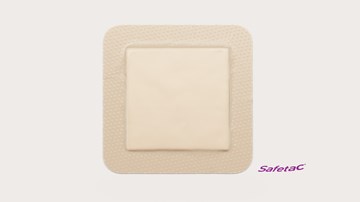多功能足跟型泡沫敷料
美皮康有边足跟型
五层结构的泡沫敷料,用于管理压疮和护理足跟部伤口
美皮康® 有边足跟型是唯一一款五层结构的足跟型泡沫敷料,经证实,与其他标准预防方案一起使用可有效 管压疮
这种多功能敷料设计还可为护理足跟处中度到重度的渗出伤口创造最佳愈合环境。 它可以有效地吸收和储存渗出物,
该设计还引入了司肤泰克® ——原创的软聚硅酮创面接触层,减少换药时的疼痛与创伤。 本品因而可以温和地黏贴在皮肤上且不会粘连湿性创面。
- 经证实,与其他标准预防方案一起使用时 可以管理压疮
- 抵御引发压疮的外在因素——压力、剪切力、摩擦力和微环境失衡
- 采用司肤泰克技术的美皮康有边型敷料可最大限度地减轻更换敷料时的疼痛
- 出色的液体吸收能力和储存能力
- 降低浸渍风险
更多产品信息
何时使用美皮康有边足跟型
治疗
美皮康®有边足跟型专为贴合足跟部而设计。 五层的高吸收泡沫结构可以有效地管理渗出物和伤口环境。 所以,您可以用它来治疗渗出伤口,如压疮、糖尿病足溃疡、足跟溃疡、创伤伤口和其他二次愈合伤口。
压疮预防
美皮康有边足跟型已被证明可以预防压疮
注:使用敷料作为预防性治疗手段并不能全面代替综合压疮预防方案。
如何使用美皮康有边足跟型
观看如何轻松使用美皮康有边足跟型,帮助您为患者获得最佳治疗效果。
美皮康足跟有边型如何帮助预防压疮
了解美皮康有边足跟型如何帮助预防溃疡。 这比你想象的要容易。
观看Gefen教授如何用现代科学解释压疮病因
相关产品
'References'

 美皮康有边足跟型
美皮康有边足跟型











